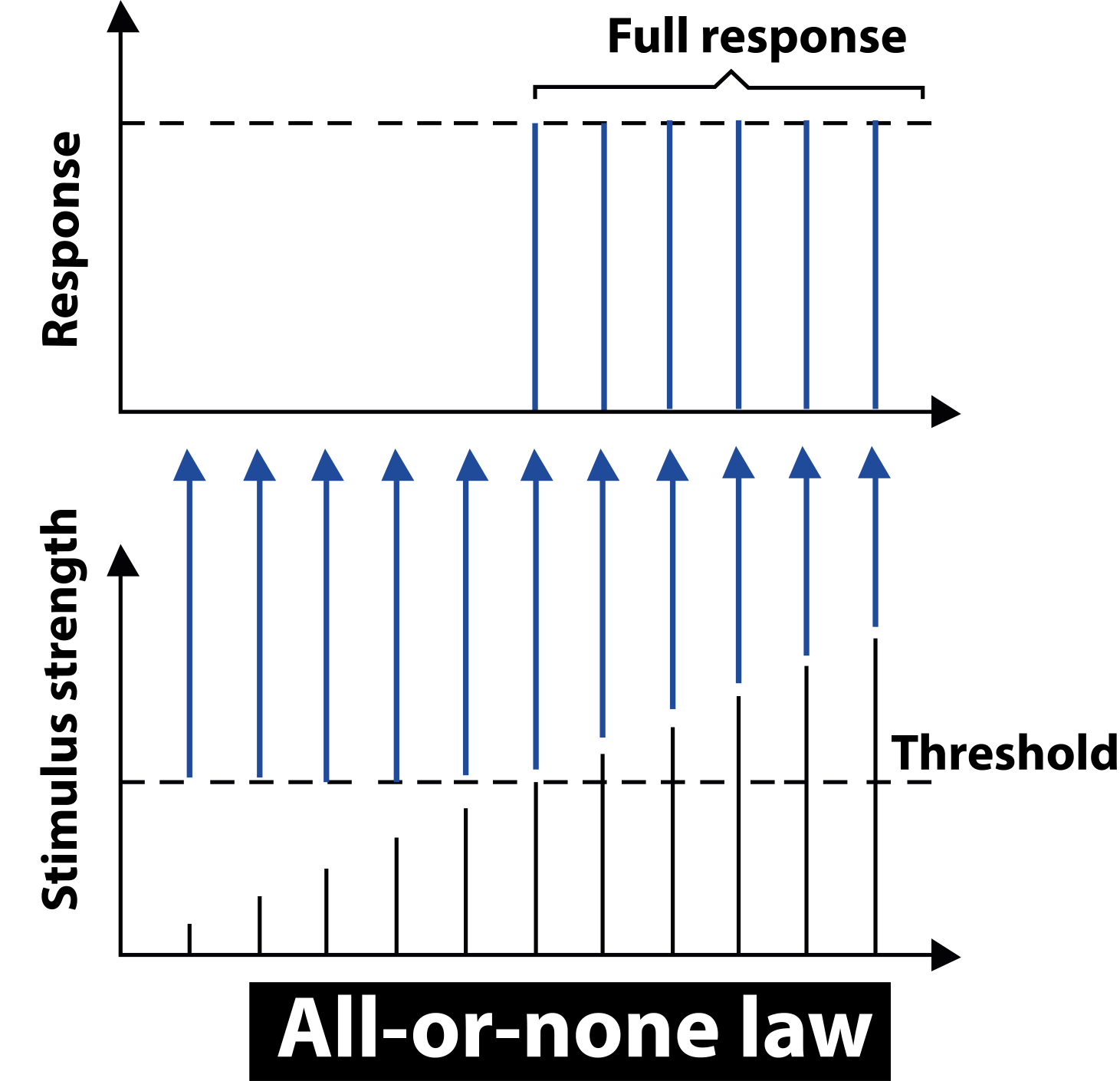
All or none law is not applicable for
(A)Whole skeletal muscle
(B)Single skeletal muscle fiber
(C)Whole cardiac muscle
(D)Single smooth muscle fiber
Answer
485.4k+ views
Hint: All or none law is not applicable for the muscle which is a form of striated muscle tissue that is under the voluntary control of the somatic nervous system.
Complete answer:
All or none law is not applicable for Whole skeletal muscle. The law which is known as all-or-none law is the principle that tells us that the strength by using which a nerve or muscle cell will be responding to the stimulus is independent of the strength which stimulus has. If that stimulus due to some reason exceeds the threshold potential, the nerve or muscle fiber will provide a complete response; otherwise, there's no response.
Additional Information: The magnitude of the action potential which is found out in any single nerve fiber is independent of the strength of the exciting stimulus, provided the latter is adequate. An electrical stimulus below threshold strength will fail to elicit a propagated spike potential. If it's of threshold strength or over, a spike (a nervous impulse) of maximum magnitude is about up. Either the only fiber doesn't respond with spike production, or it responds to the utmost of its ability under the conditions at the instant. This basic property of the only nerve fiber is termed the all-or-none relationship. This relationship holds just for the unit of tissue; for nerve tissue, the unit is that the neuron, for striated muscle the unit is that the individual muscle cell and for the guts, the unit is that the entire auricles or the whole ventricles.
So, the correct answer is ‘Whole skeletal muscle’.
Note: A skeletal muscle is always referred to as multiple bundles known as fascicles of cells joined together called muscle fibers. The fibers and muscles are always surrounded by the connective tissue layers which are known as fasciae. Muscle fibers are formed by the fusion of developmental myoblasts, which will take place during a process which is known as myogenesis.

Complete answer:
All or none law is not applicable for Whole skeletal muscle. The law which is known as all-or-none law is the principle that tells us that the strength by using which a nerve or muscle cell will be responding to the stimulus is independent of the strength which stimulus has. If that stimulus due to some reason exceeds the threshold potential, the nerve or muscle fiber will provide a complete response; otherwise, there's no response.
Additional Information: The magnitude of the action potential which is found out in any single nerve fiber is independent of the strength of the exciting stimulus, provided the latter is adequate. An electrical stimulus below threshold strength will fail to elicit a propagated spike potential. If it's of threshold strength or over, a spike (a nervous impulse) of maximum magnitude is about up. Either the only fiber doesn't respond with spike production, or it responds to the utmost of its ability under the conditions at the instant. This basic property of the only nerve fiber is termed the all-or-none relationship. This relationship holds just for the unit of tissue; for nerve tissue, the unit is that the neuron, for striated muscle the unit is that the individual muscle cell and for the guts, the unit is that the entire auricles or the whole ventricles.
So, the correct answer is ‘Whole skeletal muscle’.
Note: A skeletal muscle is always referred to as multiple bundles known as fascicles of cells joined together called muscle fibers. The fibers and muscles are always surrounded by the connective tissue layers which are known as fasciae. Muscle fibers are formed by the fusion of developmental myoblasts, which will take place during a process which is known as myogenesis.

Latest Vedantu courses for you
Grade 11 Science PCM | CBSE | SCHOOL | English
CBSE (2025-26)
School Full course for CBSE students
₹41,848 per year
Recently Updated Pages
Master Class 9 General Knowledge: Engaging Questions & Answers for Success

Master Class 9 English: Engaging Questions & Answers for Success

Master Class 9 Science: Engaging Questions & Answers for Success

Master Class 9 Social Science: Engaging Questions & Answers for Success

Master Class 9 Maths: Engaging Questions & Answers for Success

Class 9 Question and Answer - Your Ultimate Solutions Guide

Trending doubts
Where did Netaji set up the INA headquarters A Yangon class 10 social studies CBSE

A boat goes 24 km upstream and 28 km downstream in class 10 maths CBSE

Why is there a time difference of about 5 hours between class 10 social science CBSE

The British separated Burma Myanmar from India in 1935 class 10 social science CBSE

The Equation xxx + 2 is Satisfied when x is Equal to Class 10 Maths

What are the public facilities provided by the government? Also explain each facility




